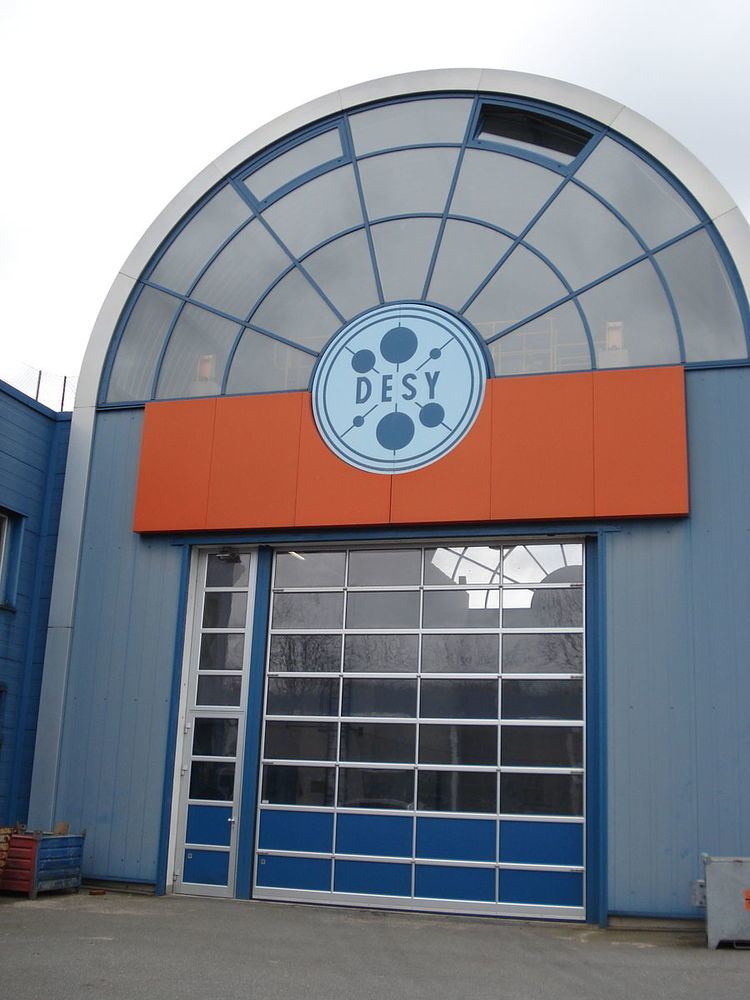 | ||
Similar | ||
ZEUS was a particle detector that operated on the HERA (Hadron Elektron Ring Anlage) particle accelerator at DESY, Hamburg. It began running together with HERA in 1992 and was functional until HERA was decommissioned in June 2007. The scientific collaboration behind ZEUS consisted of about 400 physicists from 56 institutes in 17 countries.
Contents
The ZEUS detector comprised many components, including a depleted uranium plastic-scintillator calorimeter, a central tracking detector (which is a wire chamber), a silicon microvertex detector and muon chambers. In addition, a solenoid provides a 1.43 T magnetic field.
The ZEUS experiment studied the internal structure of the proton through measurements of deep inelastic scattering by colliding leptons (electrons or positrons) with proton in the interaction point of ZEUS. These measurements were also used to test and study the Standard Model of particle physics, as well as searching for particles beyond the Standard Model.
Background
DESY was founded in 1959 and started colliding electron beams in 1964 in the DESY experiment. Since then, it has been a highly regarded center for particle physics. The design effort for ZEUS can be traced back to 1982, a Letter of Intent was submitted in 1985, and the HERA collider began operation in 1992. The last electron–proton collisions at ZEUS were recorded on 30 June 2007. The other multi-purpose experiment at the HERA collider was the competing H1 experiment. Since May 2012, the former ZEUS detector hall has been used as a lab space for the international European XFEL project.
Detector
The main components of the ZEUS detector were the tracking components, the calorimeter and the muon detectors. The purpose of the ZEUS detector was to collect data to allow the reconstruction of physics events in a consistent way so they can be analyzed.
Calorimeter
The ZEUS Calorimeter was a uranium scintillator based sampling calorimeter and divided into 3 main sections: the BCAL (Barrel CALorimeter), FCAL (Forward CALorimeter), and RCAL (Rear CALorimeter). Each section was subdivided transversely into towers, and longitudinally into EMC (Electro-Magnetic Calorimeter) or HAC (HAdronic Calorimeter). The smallest subdivision in the calorimeter was called a cell. Each cell was read-out by two photomultiplier tubes (PMT), which helped ensure that there were no holes in the coverage if one of the two PMTs failed.
Uranium was chosen as an absorber so that the calorimeter would be compensating. Electrons and photons deposit energy differently from hadrons, but in a compensating calorimeter the response (e) for an electromagnetic cascade is equal to the response (h) for a hadronic cascade of the same energy (i.e. e/h=1). In the ZEUS calorimeter neutral pions interacted with uranium atoms to produce slow moving neutrons which were captured by the scintillator and increased the hadronic signal. Another advantage of using uranium as the absorber was that the natural radioactivity allowed the calorimeter's sensitivity to be conveniently monitored.
